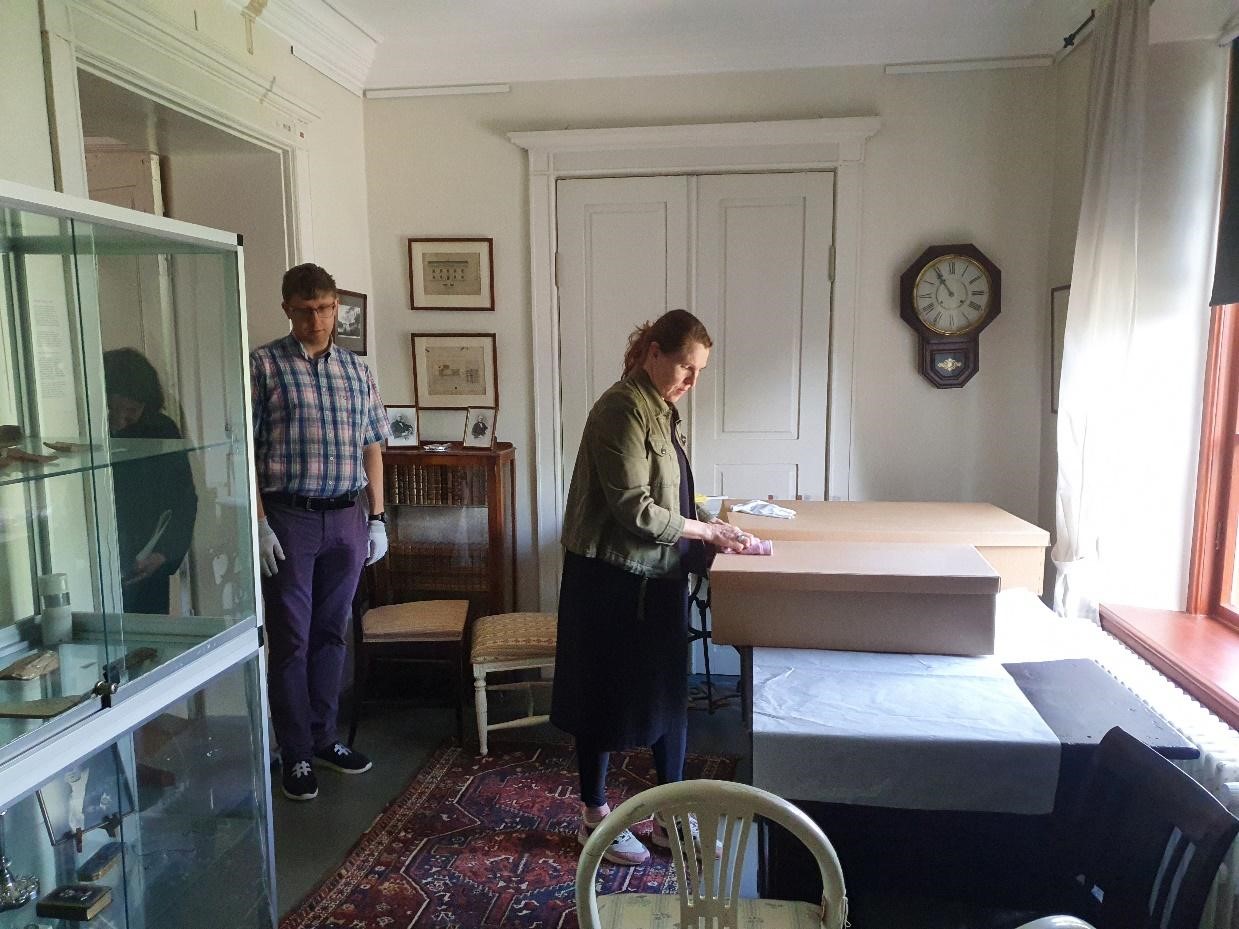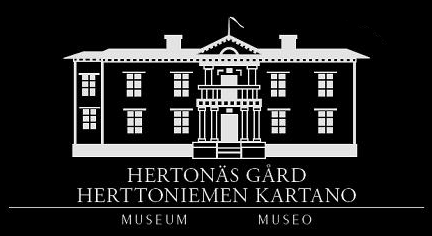Summer has started and with it the activities at the museum in Hertonäs manor have also resumed. The new curator at the museum Ted Hellsten has started with his assignments and trainees Sten Selin and Karl Heikkilä have resumed with the project of digitising the collection of museum objects, which was started last year. After the corona years, this summer has started with great interest regarding the museum. The museum had as much as over 480 guests on Helsinki day, which was on the 12th of June. The internal work with the collection of museum items has also started well. Textile conservator Maarit Jones and researcher Katri Lento from the Helsinki city museum visited us at Hertonäs and they taught us about proper handling of objects and how to store museum items in the best possible way. Researcher Eero Salmio from the Helsinki city museum also paid us a visit. He taught us about digitisation, photographing and cataloguing. The knowledge we gained from their visits is very useful, since we need to move and photograph the objects for the digitisation project. Now we are capable of giving museum objects the best possible circumstances for storage. According to textile conservator Maarit Jones, the curtains in the museum, especially the ones in the red lounge on the first floor, need to be fixed. Luckily this seems to be possible by washing them, which can be done by the city museums conservators, for instance.
.jpg)
This picture shows how an old dress had previously been stored in brown paper. Photo by Sten Selin.
The most important things when conserving old items, are to always use the right equipment while handling them and to handle them with care. The durability of the items greatly increase when you do things right. For instance, using gloves is important. Nowadays vinyl gloves are commonly used and are preferred over cotton gloves. Carefully cleaning the object before handling them is also good practice. It is good to clean wooden furniture with fibre cloth and cleaning dust from storage boxes before putting them back in place, for example. Storing the objects in the right way and using the right materials for storage is also important. The brown boxes in the picture above are not commonly used anymore because they can apparently be harmful for items in the long term. Still, they are the best option for us in many cases, considering what is available to us at the moment. The brown paper, which can also be seen in the picture, is likewise outdated and not used for wrapping anymore. That is why we actively change it to a white silk paper, which meets today's standards. While photographing and digitising the collections we will eventually wrap all the stored museum objects in this paper.

In this picture the new curator Ted Hellsten and textile conservator Maarit Jones from the city museum are examining old textiles in their storage boxes. Photo by Sten Selin.
Concerning digitisation and information sharing, big leaps forward have been made in the museum industry lately. Digitisation is often slow and time consuming work, which can make it hard for smaller museums, who do not necessarily have the resources for getting the work done. That is why the help that the Helsinki city museum can offer smaller museums is so important. Their expertise and resources can be of great use for such places, like us, for instance. We would like to thank Maarit, Katri and Eero for all their help. I would also like to thank Svenska kulturfonden for their funding, which enabled us, the trainees, to work at Hertonäs manor museum.
Sten Selin’s historical internship at Hertonäs Manor Museum is financed by the Swedish Cultural Foundation in Finland.
